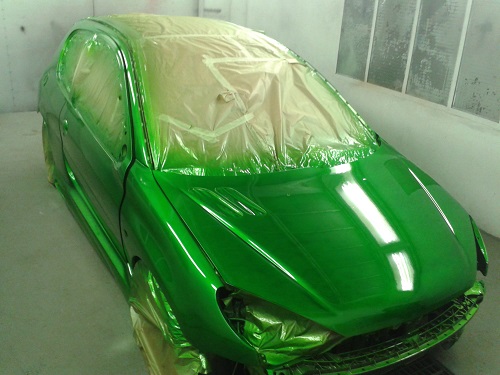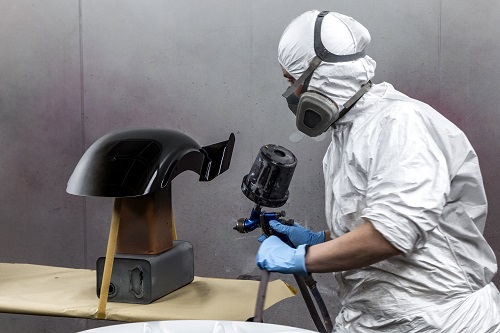 Car paints with solvents
Car paints with solvents
Solvents are used in the composition of solvent-based car paint, motorcycle paint and bike paint, as an evaporable liquid part. These solvent-based car paints have been used to great effect by body painters for several decades. Harmful, they harm health and cause a negative impact in terms of ecology by participating in the increase of the greenhouse effect. The use of solvent paints is now strictly regulated; for special paints there are no restrictions.
Solvents are liquids that have various qualities, the main one being that they evaporate easily. A paint includes a solid part (the solid content, or dry extract) and a volatile part.
The advantages of solvent-based car paints
They are highly regarded for their quality, both as body paints and as custom paints on helmets and motorcycles. Fine, dilutable without limit, drying very quickly in winter as in summer, easy to sand and very resistant over time, are some of the advantages they offer.
By drying quickly, solvent-based paint allows you to paint more stiffly, by linking layers. Ultra fluids, a solvent-based paint, stretches and dries to create a thin, smooth and perfect coat. Less thick than other paints, solvent-based paints form a thinner layer, without creating a "staircase" after removal of the adhesives.
Polyurethane resin binder
In the field of bodywork, but also marine or industrial paint, the polyurethane resin binder is used for the manufacture of paints. It now exists in a solvent-based or water-based version. Polyurethanes are glossy, thick, and resistant.
Polyurethane paints are "direct gloss" lacquers or two-component varnishes, which dry and harden by evaporation of the solvent, but necessarily by polymerization, with the reaction of a hardener.
 Epoxy resin binder
Epoxy resin binder
Little used in the automotive field, the epoxy resin binder shows undeniably superior adhesion properties and excellent hardness. Unfortunately epoxy polymers show a certain weakness in resistance to sunlight, by yellowing. Epoxies allow the formation of excellent casting resins, or formidable adhesion primers for all types of materials.
Nitrocellulose paint
The binder for nitrocellulose paint is little used today in the development of automotive paints. It was widespread before but remains present in some third world countries. Its qualities are the simplicity of use because it is a mono-component product, and its fast drying. Today, in Europe, it no longer meets ecological standards, nor resistance and durability standards.
Solvent-based acrylic resin binder
Acrylic is the most common family of polymers. The solvent-based acrylic resin binder or in aqueous version, are used today in 80% of car and motorcycle paints. The best automotive varnishes produced by the biggest brands are solvent-based acrylic varnishes.
Common confusion leads to believe that acrylic means "water-based", but this is not true.
Car paint solvents
Car paint solvents are volatile liquid products. Frequently used in the composition and use (as a thinner) of bodywork paints, they allow, as "solvents", to dissolve colors and resins.
Ethyl acetate, butyl acetate, xylene are examples of solvents frequently used in solvent-based paints and varnishes.
In bodywork water-based paints, there are different solvents that are soluble in water, such as butyl glycol, dimethyl propylene , or certain alcohols.
Additives adjuvants
In the composition of a paint, adjuvant additives are necessary or useful to improve the properties and the stability of the preparation. Dispersant additives help keep the pigments separated. Wetting additives help to achieve good wettability of the paint. Defoaming additives prevent the formation of foam. And UV additives help reduce the risk of yellowing or discoloration.
Composition of acrylic water-soluble paints
Composition of paint pigments




















































































